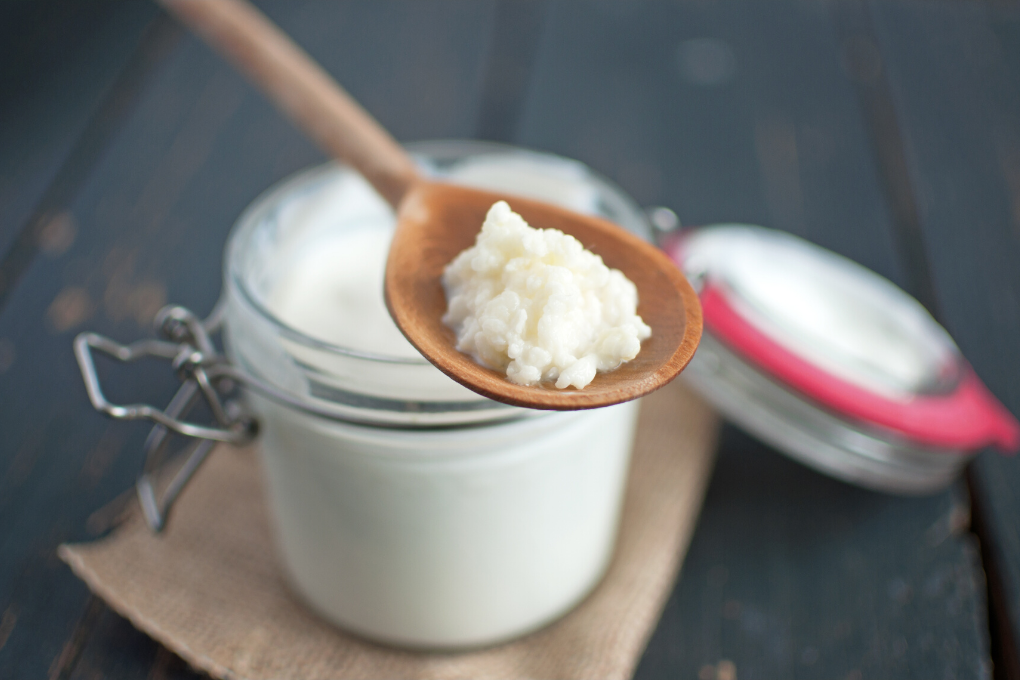If you’ve recently started making milk kefir or are considering diving into this probiotic-rich hobby, you might wonder: What happens if I need to take a break? Life happens—travel plans, busy schedules, or simply a need for a pause. The good news? Kefir grains are resilient little powerhouses that can adapt to your routine. Whether you’re planning a short break or an extended hiatus, this guide will walk you through storing your grains and resuming kefir-making with ease.
Understanding Kefir Grains: Active vs. Dormant
Kefir grains are living colonies of bacteria and yeast that thrive when fed regularly with milk.
Active Grains: When actively fermenting, grains produce tangy, creamy kefir within 24–48 hours. They’re plump, translucent, and highly productive.
Dormant Grains: When grains are stored in cold or dry conditions, their activity slows or halts entirely. Dormancy preserves the grains until you’re ready to reactivate them.
The goal during storage is to ensure the grains stay healthy while minimizing their activity until you’re ready to use them again.

Short Breaks (Up to 1 Month): Refrigerating Kefir Grains
For breaks lasting up to one month, refrigeration is the easiest and most effective method.
Steps for Refrigeration:
Prepare the Grains: After straining your grains from the last batch of kefir, place them in a clean jar.
Submerge in Milk: Cover the grains with enough fresh milk to fully submerge them.
Seal the Jar: Use a lid to tightly seal the jar. This prevents contaminants like mold or harmful bacteria from entering.
Store in the Fridge: Place the jar in the refrigerator at 4°C. The cold temperature slows down the fermentation process, putting the grains into a semi-dormant state.
Example:
Before heading off on a two-week vacation, Jane stores her grains in a jar with fresh milk and seals it. Upon returning, she refreshes the milk and resumes fermenting without any issues.
Revival After Refrigeration:
Replace the milk with fresh milk and let the grains ferment at room temperature for 24–48 hours. It may take a couple of batches for the grains to regain full activity, producing their characteristic thick, tangy kefir.

Long Breaks (1 to 6 Months): Freezing Kefir Grains
If you need to step away from kefir-making for more than a month, freezing is an excellent option for preserving your grains.
Steps for Freezing:
Rinse and Dry the Grains: Gently rinse the grains with milk (avoid water) and pat them dry with a clean towel until slightly dehydrated.
Coat with Milk Powder: Roll the grains in a small amount of milk powder. This protects their microbial structure during freezing.
Pack Airtight: Place the coated grains in an airtight container or freezer-safe bag. Remove as much air as possible to prevent freezer burn.
Freeze: Store the grains in the freezer at -18°C for up to six months.
Revival After Freezing:
Thaw the grains in the refrigerator overnight. Place them in fresh milk at room temperature for 24–48 hours. Expect the grains to take 2–3 fermentation cycles to fully reactivate and produce consistent kefir.
Alternative for Long-Term Storage: Drying Kefir Grains
Drying grains is another option for extended storage, lasting several months to years.
Steps for Drying:
Dry the Grains: Spread the grains on a clean cloth or paper towel in a cool, dry place. Let them air-dry for 3–4 days until they’re fully dehydrated.
Store in a Container: Place the dried grains in an airtight container or resealable bag. Keep them in a dark, dry spot.
Revival: Rehydrate dried grains by soaking them in milk at room temperature for 24–48 hours. Be patient, as it may take multiple batches for the grains to return to full activity.

Common Questions and Troubleshooting
Can I refrigerate grains for more than a month? While grains can survive longer in the fridge, their health may decline after one month. Freezing is a better option for breaks longer than four weeks.
What if my grains seem inactive after storage? Dormant grains often need 2–3 cycles of fermentation to regain full strength. Feed them fresh milk daily until they start producing thick kefir.
How do I prevent contamination? Always use clean jars, utensils, and fresh milk. Keep grains stored away from other ferments like kombucha to avoid cross-contamination.
Key Takeaways
Short Breaks: Refrigerate grains in milk for up to one month. Ensure the jar is sealed to prevent contamination.
Long Breaks: Freeze grains coated in milk powder for up to six months. Thaw and revive when ready.
Extended Storage: For long-term breaks, dry the grains and store them in a dark, dry place.
With these methods, you can confidently pause your kefir-making without worry. Whether it’s a week-long getaway or a six-month adventure, your kefir grains will be ready to resume their probiotic magic whenever you are!




